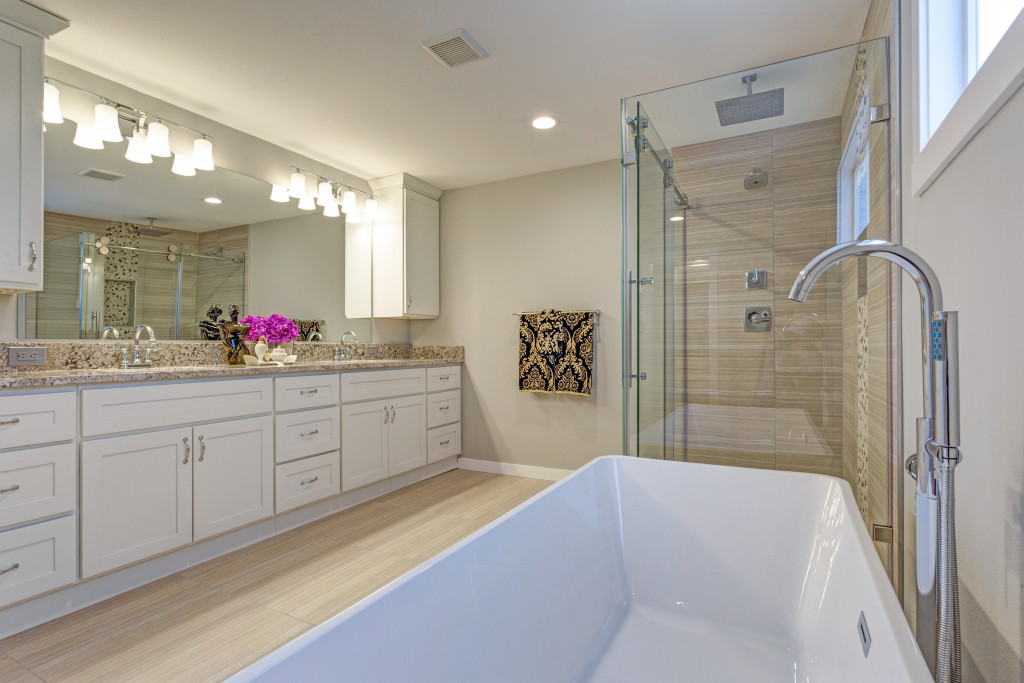While there are residential care homes and nursing facilities, some elders prefer to spend their retirement days in the comfort of their homes.
However, living independently can pose risks to elders’ safety and security. So it’s your responsibility to see to it that their homes are tailored according to their needs. If you don’t know anything about elder-proofing homes, here are practical guidelines for you.
Bedroom
Conduct risk assessments of elders’ bedrooms since it’s one of the most frequented parts of the house.
- Remove unnecessary furniture pieces, furnishings, and electrical cords in the area. It’s best to keep it free from clutter to avoid unwanted incidents of sliding and tripping. Elders are prone to accidents, especially at nighttime, so it’s best to keep their bedrooms spic and span. You should also consider taping cords and wires in place to eliminate additional risks.
- Install railings on both sides of their beds. These support grips will make getting in and getting out of their beds more convenient for them. Since elders don’t always have the physical strength to drag themselves up every day, these safety handles would provide them that much-needed assistance.
- Keep the bedroom well-lit by installing nightlights. Elders don’t have a good vision, especially at nighttime, so installing wall-mounted lighting can indeed reduce tripping hazards. You can also put light fixtures under the bed for added illumination in the dark. Aside from that, you can switch their bedroom lights to sensory motion lights. These lights automatically activate when movement is detected away from the bed.
- Invest in quality window treatments or furnishings to let in more natural light into elders’ bedrooms. Since window treatments can easily brighten up their homes, seniors won’t have to use artificial lighting during the day.
Bathroom

Restrooms are high-risk areas for aging individuals, so make sure everything is engineered to make elders’ lives easier.
- Install grip rods near the toilet and shower cubicle. Since these are the most slippery parts in the bathroom, railings will provide them additional support and balance.
- To prevent elders from falling, put non-slip mats on slippery areas such as the bathtub, shower room, toilet bowl, and sink. These strips will reduce the likelihood of sliding since they provide traction. There are also splicing mats that can cover larger areas of the bathroom. Made from PVC, these mats are waterproof and eliminate the chances of seniors’ slipping, especially when in the shower. There are also treatments you can use to make their bathroom tiles slip-resistant.
- Place additional light fixtures in the area, especially near the toilet. These lights would provide elders illumination during their midnight trips to the bathroom.
- Put stools or benches they could use when they’re in the shower. The presence of a sturdy seating would make their shower routines more convenient for them.
- Opt for easy-to-use lever handles for their faucets. Avoid knobs that require more energy from them. Avoid incorporating complex features into their homes.
- Remove locks on their doors to avoid unwanted incidents of accidentally getting locked inside. That would only cause anxiety and panic among elders. Also, since they’re living alone, it’s best to eliminate bathroom features that could put them at risk.
Kitchen
The kitchen houses appliances and tools that can be dangerous to elders, especially without proper safety-proofing measures.
- Make drawers and cabinets easy to reach. Items should be within arm’s reach so elders won’t have to bend too low or reach too high to get their hands on them.
- Install sensory motion lighting in the kitchen. That activates the lights upon detection of movement in the area, so elders don’t need to switch the lights on and off manually every time they enter and leave the kitchen.
- Opt for refrigerators with freezers located at the bottom since seniors rarely use them. Doing this prevents elders from crouching down when accessing food items in their refrigerator. Also, make sure their refrigerator doors can be easily opened and require minimal muscle power from elders.
- Provide them with electric can openers. Since they live on their own, they need electric can openers to make their everyday cooking more convenient.
- Install smoke detectors near the stove, oven, or microwave. These devices are essential in safety-proofing because they can easily detect smoke and flames in the kitchen area. Elders also need carbon monoxide detectors to monitor the indoor pollution in their cooking vicinity. This equipment can immediately detect toxic gases in the air, specifically methane and propane. However, you should not forget to change the batteries every month.
- There are also shut-off timers that ensure elders’ safety when cooking. Some timers turn off appliances after a specified time. There are also shut-off devices that have motion detecting features. When elders are away from the stove for five minutes, these timers will automatically turn off the appliance. It will only go back on when they are already within range.
- Install fire extinguishers in the area. That is to allow easy access when worse comes to worst. Add fire extinguishers in other rooms as well.
Schedule regular inspections to guarantee all the corners of seniors’ homes are safe from harm. By following these elder-proofing tips, you would be able to provide the right amount of assistance and protection your loved ones need.


